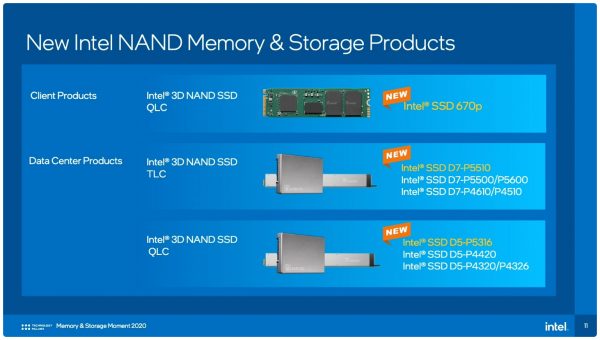Intel is making storage cheap, fast, and non-volatile with its new Intel Optane family of products. Its release includes its 3D XPoint memory technology (pronounced three dee cross point).
Intel presents two different Optane lines; Intel Optane Memory, which is the same form factor as traditional memory sticks, and Intel Optane SSDs, which use the same form factor as traditional Hard Drives and SSDs.
Traditionally hard drives and memory have been two very different technologies, which run at two very different speeds. Even with Solid State Drives (SSD) now commonplace in servers, desktops, and laptops, there is still no comparison between RAM speed and hard drive speed.
Up until Optane’s release, all RAM was volatile; when the server was rebooted, all data within the memory was cleared. Optane changes that by introducing the concept of non-volatile memory into computers.
With software changes, this non-volatile memory can be addressed by the operating system as a hard drive. This allows software installed on the computer to access what appears to the computer to be a traditional hard drive that accepts Input / Output (IO) requests at the memory speed.

Intel Optane Memory
The Optane memory sticks are not limited to being used as storage. These memory sticks can double as non-volatile mail memory (VMDIMM). This allows for additional caching for software modified to allow this caching to be installed on the computer.
While the caching configuration requires specific changes to the software packages to work, using Optane as a traditional hard drive does not require any additional software changes to allow the software to use this high-speed performance option.
Upgrading from traditional memory to Optane memory can be as simple as swapping out the RAM sticks on the motherboard, assuming that an Optane compliant motherboard and processors are being used. To use Optane memory within computers, specific hardware is required, such as chipsets, processors (CPUs), BIOS, etc.
Intel Optane SSDs
The Optane SSDs replace traditional hard drives and SSDs in servers without requiring newer hardware to be available in the computer. This allows users to upgrade to Optane SSDs quickly and easily, as long as those computers allow for hard drive formats such as the M.2 card format, the U.2 standalone format, or the NVMe PCIe format.
No matter the format used, the Optane storage performance should be similar, limited more by the bandwidth of the disk format available within the server rather than the performance of the Optane SSDs.
From a performance perspective, this is where Optane stands out. While traditional SSDs have a performance drop off as the disks begin to fill, Intel Optane storage does not have similar performance degradation. As the Optane disks fill, the performance of the storage stays relatively consistent, showing little variation.
One of the significant downsides of traditional SSD storage is the limited number of writes to each storage cell within the SSD device. Optane storage does not have this limitation due to the underlying architecture Intel designed for these devices.

Making Things Faster Overall
As these technologies become more prevalent and are adopted by more and more people within the servers they support, this technological breakthrough’s benefits will become more and more profound.
For decades now, computers have been limited by their storage speed. This is no longer the case.




